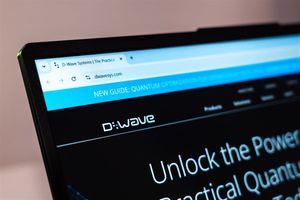Everyone should begin their savings journey on the right foot, making the trip toward their ultimate financial goal as easy and fun as possible.
But how can you pick the ideal savings account for your finances and your requirements with so many options available and risks to be aware of?
Although one of the most straightforward financial products is a savings account, there are other factors to consider than interest rates.
Prior to selecting and creating an account, you should think about and compare the many ways that accounts operate as well as assess your own situation. We’ve compiled a list of tips and things to consider when choosing a savings account.
Are Branch Access or High Apys Your Top Priorities?
High returns on savings products are often traded off with branch access.
Carl Jensen, co-founder of Compare Banks shares: “Investigate online high-yield bank accounts if you’re searching for the greatest annual percentage yields (APYs) on your money.
Online banks may pay out their clients’ deposits at a greater rate since they don’t have to spend for maintaining physical branches.
For those who are at ease utilizing digital services, want high returns, and value convenience above accessibility, online savings accounts may be a suitable choice.
Even while online banks don’t have physical locations, they often nonetheless provide access to ATMs via affiliations with significant ATM networks.
On the other hand, you may speak with bank staff in person if you choose a conventional bank with branches. A larger variety of goods and services, like loans, credit cards, and financial advising services, are also often offered by traditional banks.
You may also be able to manage your account online with some of these institutions. The APYs on their savings products, however, will probably be far lower than those offered by online-only banks.”
Are There Any Fees or Minimum Balance Demands?
Zulfar Azimi, the COO of CanXida recommends checking for fees and requirements carefully.
She shares: “Even though a savings account may have lower costs than a checking account, many savings accounts include monthly fees. But don’t let a monthly charge put you off right away. To avoid paying the charge, it’s crucial that you can fulfill the conditions.
You may often avoid a monthly charge in the following ways:
- Keeping the minimum balance requirement
- Configuring automated transfers
- Linked with a checking account at the same banking institution
It’s easy to avoid the monthly charge if you already have a checking account with the same bank and connect it to a savings account.
However, considering that checking accounts sometimes have their own costs, opening one merely to avoid the charge may not be a wise idea.
One of the simplest methods to prevent being charged a monthly fee is to keep your account balance at a minimal level. Find a checking account with a minimum balance that you can afford to meet.”
How Liquid Do Your Funds Need To Be?
The maximum number of withdrawals from savings accounts per month has traditionally been six. This is due to savings accounts being labeled as non-transaction accounts under a federal regulation known as Regulation D.
But in April 2020, the restriction was removed, giving banks more freedom to decide how many withdrawals they would let from savings accounts.
Most banks still have a restriction on the number of transactions you may make against a savings account, and you will be charged a fee if you go over this limit.
If you place more than six withdrawals in a statement cycle at Bank of America, for instance, there is a $10 charge for each withdrawal.
There are certain savings accounts that don’t have many restrictions on how many transactions you may do if you desire a savings account with higher liquidity.
As an example, Ally Bank is reimbursing any expenses associated with excessive savings withdrawals. However, it should be noted that this is just a temporary increase in the limit.
Which “Saver” Category Do You Fall Under?
For a higher interest rate, are you prepared to fulfill tougher savings requirements? Do you want to optimize your savings instead of stressing about achieving monthly savings requirements?
Your best option for a savings account may be determined by the answers to these questions.
A term deposit is another option to think about if you won’t need access to your funds for a while. With term deposits, you may receive a fixed rate of interest while keeping your money in a locked account for a certain period of time (often between one month and five years).
Read the Terms and Conditions Carefully
Saj Munir, owner of UK-based business shares: “There are terms and conditions attached to every savings account. Even though you may be tempted to just scan them, read them thoroughly.
The minimum deposit amounts required by various lenders might range from $1 to $10,000. In order to get interest, you could also be required to have a minimum balance.
For falling below the minimum needed balance, there can even be fines. Read the terms and conditions completely every time.”
Look Around for the Best Package
“There are never two identical savings accounts.” Says Rhett Stubbendeck, CEO of LeverageRx. “There will be a variety of savings accounts available from various lenders, each with its own interest rates, charges, and minimum balance requirements.
Your local community bank or credit union is a good place to start if you’re trying to locate the finest savings account for you. Give credit unions a look since they often provide better interest rates than banks because they are nonprofit and member-owned.”
Are There Any Additional Features?
It might also matter how simple it is for you to maintain your savings account and conduct transactions. You may be able to increase your savings with the aid of certain savings accounts’ additional planning and saving tools.
For instance, several banks now provide capabilities for round-up saves. When you make purchases using your connected transaction account, the change is rounded up to the next dollar and deposited into your savings account.
Some providers also let you open additional sub-accounts, which may come in useful if you are setting money aside for many objectives.
Read more investing news on PressReach.com.Subscribe to the PressReach RSS feeds:- Featured News RSS feed
- Investing News RSS feed
- Daily Press Releases RSS feed
- Trading Tips RSS feed
- Investing Videos RSS feed
Follow PressReach on Twitter
Follow PressReach on TikTok
Follow PressReach on Instagram
Subscribe to us on Youtube





